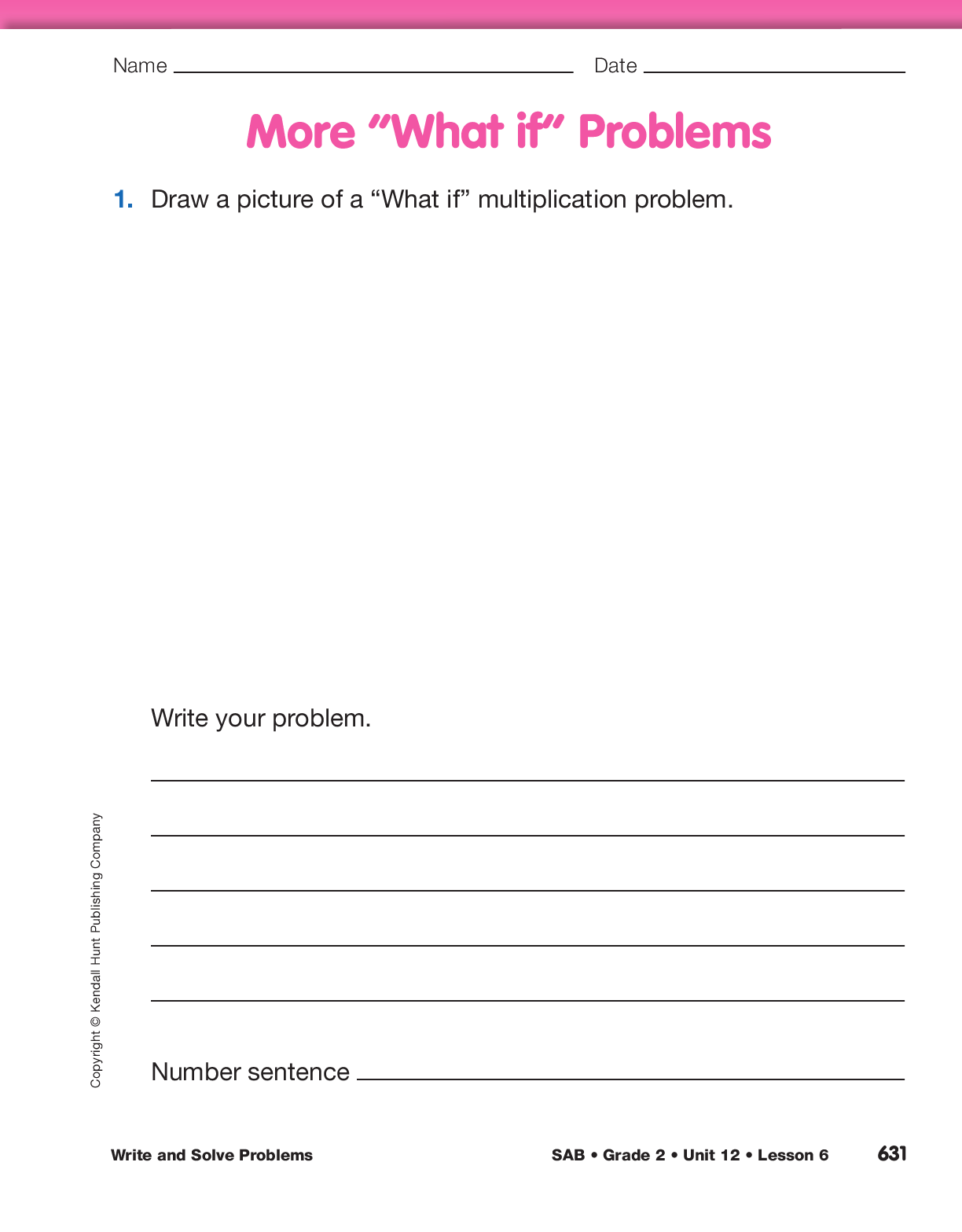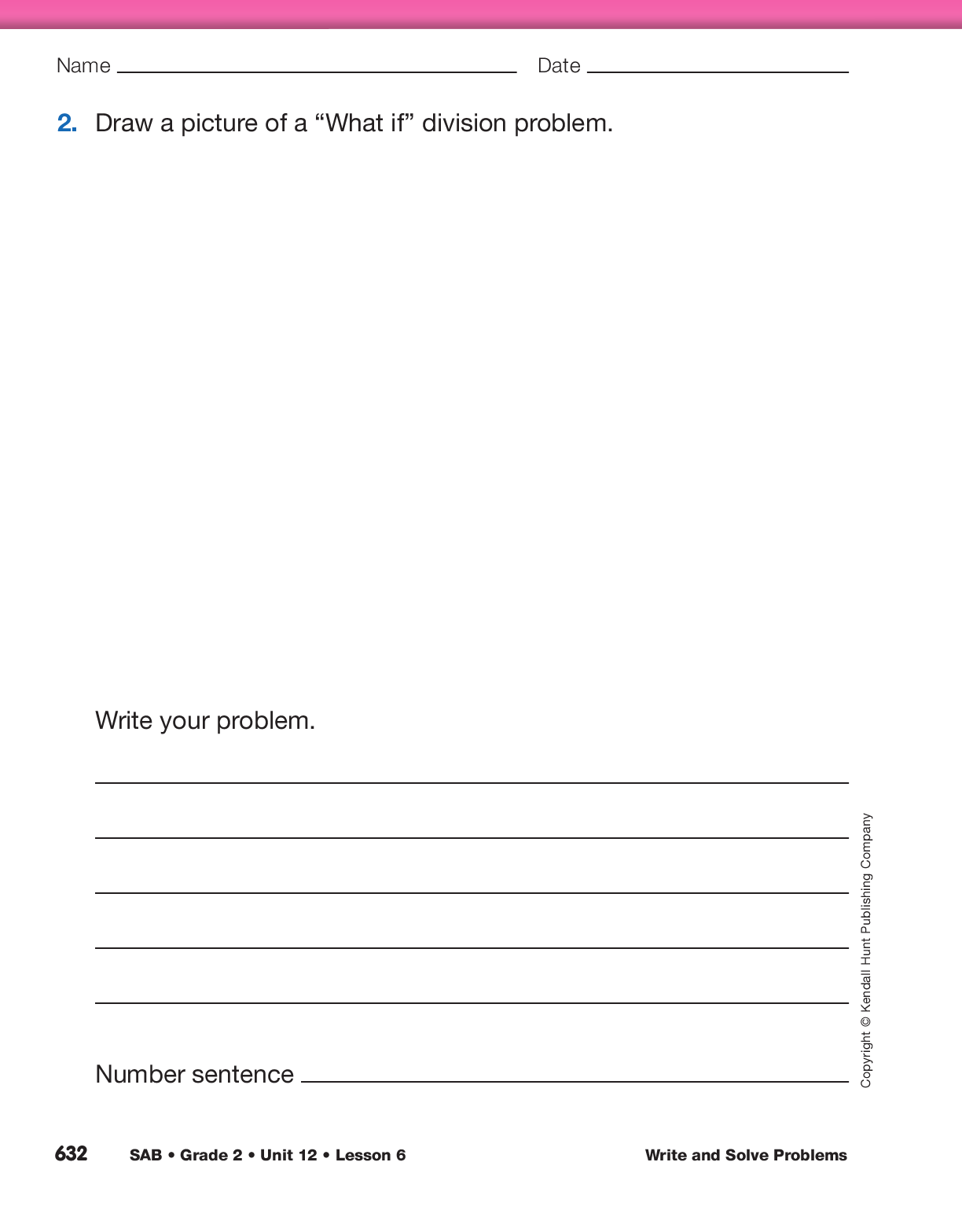Ask students what they have learned about multiplication and division.
- What does it mean to multiply two numbers, such as 5 × 3? (Possible response: It means you have
5 groups of 3 or 3 groups of 5.)
- Tell a story about the number sentence 5 × 3. (Possible response: There are 5 monkeys and each monkey eats 3 bananas a day.
How many bananas do they need each day?)
- What is a division number sentence related to
5 × 3? (15 ÷ 3 = 5 or 15 ÷ 5 = 3)
- Tell a story about the division sentence 15 ÷ 3. (Possible response: The zoo has 15 bananas that
have to be shared equally between 5 monkeys. How many bananas does each monkey get?)
- How is multiplication like division? (Possible response: They both involve equal shares.)
- How is it different? (Possible response: Multiplication is putting equal groups together
and then counting them all; division is separating something into equal groups or fair shares.)
Assign the More “What if” Problems pages in the Student Activity Book to assess students’ abilities to
write multiplication and division problems. To encourage students to write problems different from
the “What if” fairy tale problems they wrote in the first part of this lesson, you may want to provide a
topic, such as problems about animals, school, or characters in books. Have tiles or other counters
readily available. Remind students to use labels in their answers and that in a division number sentence, they should write the largest number first.

Use the More “What if” Problems pages in the Student Activity Book to assess students’ abilities to represent
multiplication and division problems using drawings and
number sentences [E2]; write stories for multiplication and
division sentences [E4]; solve multiplication and division
problems using strategies (e.g., skip counting, repeated
addition) with tiles, drawings, number lines, rectangular
arrays, and number sentences [E7]; divide a set of objects
into equal-size groups [E8]; and use labels to show what
numbers mean [MPE6].
Place plain white paper or drawing paper and a copy of the
Steps for Writing “What if” Problems
Master in a center to
provide targeted practice writing multiplication and division
problems.















